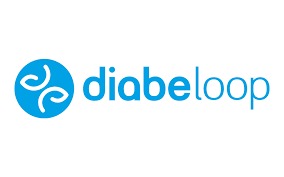A groundbreaking real-world study involving over 9,000 adults with type 1 diabetes has uncovered important differences between males and females in insulin requirements…
A groundbreaking real-world study involving over 9,000 adults with type 1 diabetes has uncovered important differences between males and females in insulin requirements. The study, conducted across Europe, utilized data from patients using the Diabeloop Generation 1 (DBLG1) hybrid closed-loop insulin delivery device and was published last month in the Journal of Diabetes Science and Technology*.
The study included 9,036 participants across multiple European countries, with women representing 59% of the cohort. The average study period was 320 days, amassing 2,887,188 days of data. Significant sex differences were observed in insulin-weight ratios:
Overall mean: 0.617 ± 0.207 U/kg
Males: 0.665 ± 0.217 U/kg
Females: 0.584 ± 0.193 U/kg
This extensive real-world analysis provides valuable insights into daily insulin requirements for adults with type 1 diabetes, revealing a statistically significant 14% difference between sexes. These findings have important implications for the practical management of insulin therapy and highlight the necessity of considering sex as a crucial factor in diabetes treatment. The treatment guidelines provided by American and European Diabetes Societies do not currently have sex-specific recommendations for insulin-weight ratios.
“Our study demonstrates the importance of sex-specific analyses in medical research, particularly in the field of diabetes management, and the importance of personalized approaches in medicine,” said Erik Huneker, co-founder and Chief Scientific and Technical Officer for Diabeloop. “This study also highlights the capacity to discover new insights from big-data analysis of real-world data.”
“So far, there were few evidence-based guidelines to estimate the total insulin requirements of patients with T1D. The common rule was that the total daily dose of insulin (TDD) is around 0.6 to 0.7 U/kg/d. From our findings, we propose that this setting should be downgraded by 10% to 15% in female patients. This new information may be useful for people initiating a treatment with insulin whatever the delivery method. Regarding patients moving to automated insulin delivery, our results are relevant, as most systems need the TDD for initiation of the algorithm,” said Pr Pierre Y. Benhamou, corresponding author of the study.
This study contributes to a growing body of evidence highlighting the importance of considering sex differences in medical research and treatment protocols. It serves as a reminder that one-size-fits-all approaches may not be optimal in managing chronic conditions like type 1 diabetes.
*Insulin Requirements According to Sex and Weight in a Population of 9036 Adult Persons With Type 1 Diabetes Using Closed-Loop Insulin Delivery, https://doi.org/10.1177/19322968241252366).
Established in 2015, Diabeloop offers personalized AI-based solutions to improve the clinical outcomes of people with diabetes while relieving them from their constant mental burden. DBLG1 and the DBLG1 system are CE marked according to MDD and MDR standards.
Its mission is to make innovation accessible to people living with diabetes,
Last March , Diabeloop completed a financing round of 14.6M with the historical investors of serie C being among them LBO France, Adag, Cemag Invest and Promontoire, Supernova Invest, UI Investissement, Odyssée Venture, Terumo Corporation, Kreaxi, Innovacom and the CERITD, .support its sustained growth strategy and its high-impact projects.
Today, Diabeloop brings together the personalities, passions and skills of talented people who work daily with passion and commitment to improve the quality of life of each person living with diabetes.
More than 11,000 type 1 people with DIabetes are supported by the DBLG1 system across Europe following the initial 2020 partnership signed with Roche.
Diabeloop achieved MDR certification for the DBLG1 system with Vicentra’s Kaleido pump at the end of 2023. This is the first generation of the MDR approved DBLG1 system and is a significant achievement resulting from all the efforts made by the company to guarantee quality standards and regulatory requirements of the highest level. Very few Medtech companies have been able to complete their MDR transition so far.




